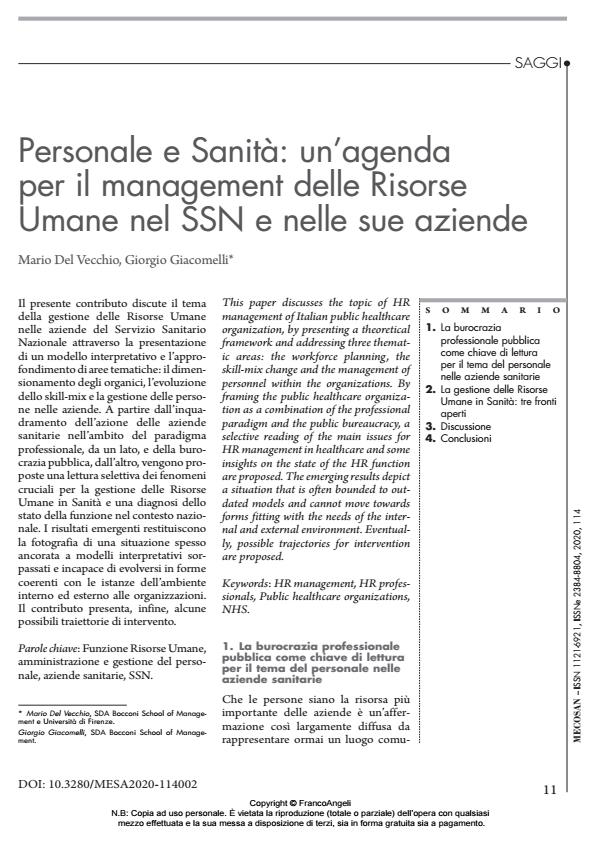Personale e Sanità: un’agenda per il management delle Risorse Umane nel SSN e nelle sue aziende
Titolo Rivista MECOSAN
Autori/Curatori Mario Del Vecchio, Giorgio Giacomelli
Anno di pubblicazione 2020 Fascicolo 2020/114
Lingua Italiano Numero pagine 21 P. 11-31 Dimensione file 272 KB
DOI 10.3280/MESA2020-114002
Il DOI è il codice a barre della proprietà intellettuale: per saperne di più
clicca qui
Qui sotto puoi vedere in anteprima la prima pagina di questo articolo.
Se questo articolo ti interessa, lo puoi acquistare (e scaricare in formato pdf) seguendo le facili indicazioni per acquistare il download credit. Acquista Download Credits per scaricare questo Articolo in formato PDF

FrancoAngeli è membro della Publishers International Linking Association, Inc (PILA)associazione indipendente e non profit per facilitare (attraverso i servizi tecnologici implementati da CrossRef.org) l’accesso degli studiosi ai contenuti digitali nelle pubblicazioni professionali e scientifiche
- La programmazione del personale sanitario in ambito territoriale: una revisione sistematica della letteratura e analisi del contesto italiano in base al PNRR e DM77/2022 Lorena Martini, Luigi Apuzzo, Daniele Pandolfi, Irene Gabutti, Domenico Mantoan, in MECOSAN 124/2023 pp.7
DOI: 10.3280/mesa2022-124oa15988 - Metodologie per la determinazione del fabbisogno di personale nel management della sanità: una revisione della letteratura internazionale Luca Pirrotta, Alessandra Da Ros, Paola Cantarelli, Nicola Bellé, in MECOSAN 126/2024 pp.123
DOI: 10.3280/mesa2023-126oa17289 - ‘Mind the professional gap’: exploring how doctors experience working in peripheral areas Marco Sartirana, Giorgio Giacomelli, Francesco Vidè, Claudio Buongiorno Sottoriva, in BMC Health Services Research 594/2025
DOI: 10.1186/s12913-025-12672-2
Mario Del Vecchio, Giorgio Giacomelli, Personale e Sanità: un’agenda per il management delle Risorse Umane nel SSN e nelle sue aziende in "MECOSAN" 114/2020, pp 11-31, DOI: 10.3280/MESA2020-114002